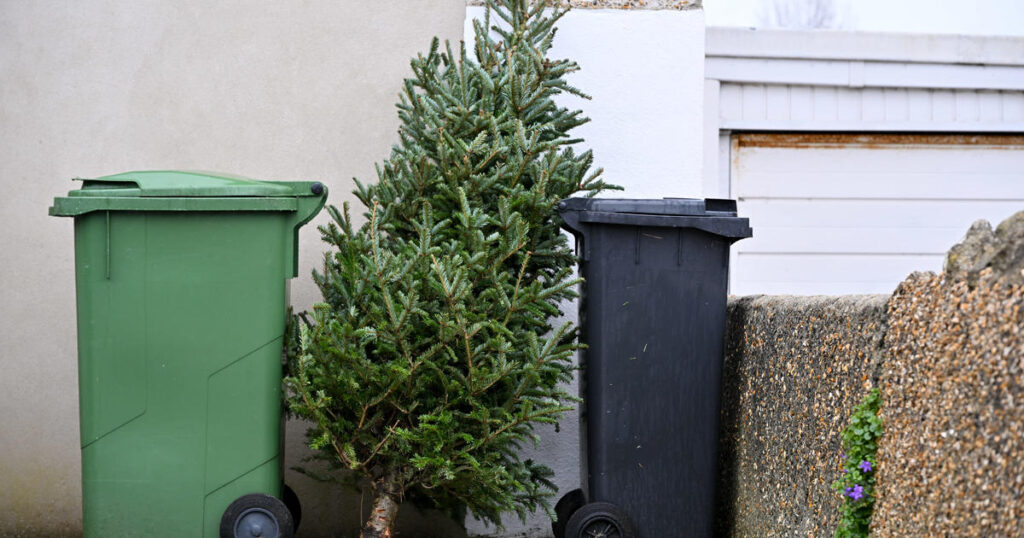Have you taken down your Christmas tree yet? Chances are you haven’t.
Whether you chose to decorate a natural or artificial tree this year, you’re probably still admiring the sight of it in your living room, and in no immediate rush to part with the warm, magical feeling it brings. Of the approximately 94 million U.S. households that display a Christmas tree, fewer than 20% take down their Christmas tree in December, according to polls by online sources like Bob Vila and Architectural Digest.
Still, unless you live in the North Pole and work for a man named Kris Kringle, you’ll probably want to take down your Christmas tree sometime before the end of January. Most Americans do, according to an Opendoor.com survey which found that 84% of respondents said they took down their Christmas decorations in January, with 51% aiming for New Year’s Day or thereafter.
When exactly should you take your Christmas tree down? The answer for the most part depends on the type of tree you have, your religious beliefs and where you live.
Here are guidelines on when to box up or throw out your Christmas tree, along with tree recycling and disposal options.
When should you take your Christmas tree down?
For those who have an artificial tree, the decision of when to take your Christmas tree down depends on personal preference. But there are traditional timelines you can follow to keep from procrastinating.
The Epiphany on January 6, is when many religiously observant Christians choose to take down their Christmas tree. The holy day commemorating the biblical story of the arrival of the three wise men bearing gifts, marks the end of the Christmas season.
Christmas tree disposal
Owners of real trees also have safety concerns and local recycling dates to bear in mind when deciding when to take down their Christmas tree.
“A dry tree will have brown needles visible in patches on the tree and will shed needles easily when touched. The small branches will also be brittle and break when bent,” Tim O’Connor, executive director of the National Christmas Tree Association, said in an email to CBS MoneyWatch.
Dry trees should be promptly removed from the home, according to the National Fire Protection Association.
The dryer they become, the more flammable they are, warns the association, which is why natural Christmas trees should never be placed near fireplaces, stoves or candles.
“Christmas trees do not start fires,” O’Connor said. “Fires are started by a heat source or electrical spark, [so] be sure your tree is not exposed to a potential source of fire.”
While rare, Christmas tree fires can escalate rapidly, warns the NFPA on its website.
Between 2017-2021, U.S. fire departments responded to an annual average of 150 Christmas tree fires in homes, NFPA figures figures show. Of those 150 fires, two in five involved some kind of lighting or electrical component. Candles, a common fire starter, caused 8% of Christmas tree fires.
You can download a Christmas tree safety tip sheet from the NFPA here.
Christmas tree recycling
When disposed of responsibly, a real Christmas tree can be a gift that keeps on giving.
The same evergreen that filled your home with holiday cheer and the scent of pine is a renewable resource that can be turned into mulch or compost, the former being the most popular way of recycling Christmas trees.
Many cities and towns offer Christmas tree recycling services including curbside pick-up or drop-off locations where trees and wreaths are put into a wood chipper and turned into mulch. Make sure to remove every last wire hook and strand of tinsel before taking part in any tree recycling services.
What are the best Christmas tree disposal options?
Aside from recycling and mulching, another use for old Christmas trees is in your backyard, where they can provide shelter for birds, squirrels and other backyard critters during wintertime. Cut boughs and limbs can be used to shelter plants from cold frosts.
Some online sites recommend feeding your old Christmas tree to goats, pigs and other livestock. Others caution against the idea, however, noting that pesticides and chemicals commonly injected into and sprayed onto farmed Christmas trees make them unsuitable for use as food for animals.
Old Christmas trees are also used as protective barriers against erosion. If you live in a coastal town, try doing a quick online search into local conservation organizations that might be interested in your old Christmas tree.
Avoid these Christmas tree disposal mistakes
Most importantly, never burn a Christmas tree in an indoor fireplace or wood-burning stove. “The sap that is still in the wood would create issues in a fireplace or stove … chimney or vent stack where sap could collect,” according to O’Connor.
Nor should you burn your Christmas tree in an outdoor fire pit, according to several commercial retailers of outdoor stoves. This is not only because Christmas trees hold a lot of sap and moisture and will create a lot of smoke, but because coniferous tree needles contain nitrogen and terpenes, a substance that is highly toxic when burned.
Burning your old Christmas tree will also release all of its stored carbon into the atmosphere, according to a 2020 report on Christmas trees from North Dakota State University.
What’s the worst way to dispose of your Christmas tree? Leaving it on the curb for the garbage collector to pick up and most likely dump in a landfill.
“Materials buried in landfills will break down into methane, which is a greenhouse gas more harmful than carbon dioxide,” Tom Kalb, extension horticulturist at North Dakota State University, states in his report.
